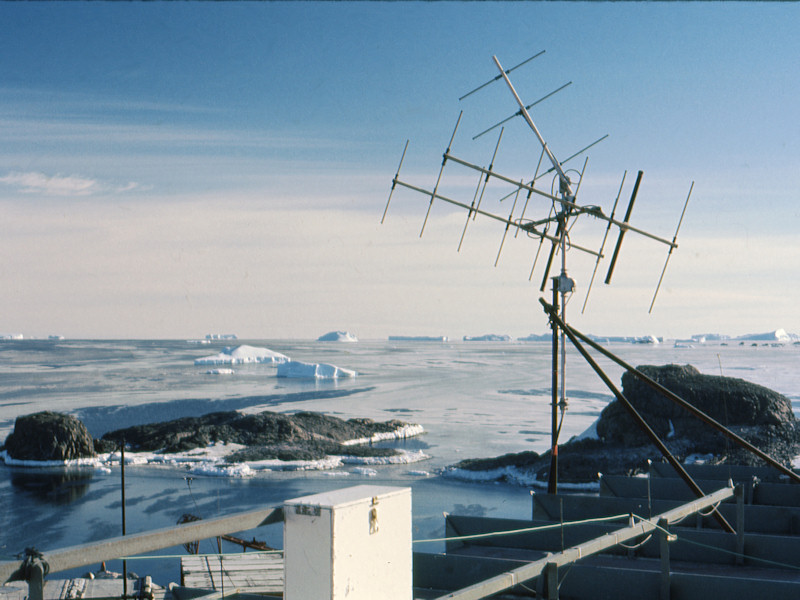Photo
album: "Before and after the launch"
Fly
over a photo with the mouse to enlarge it
Click
on a photo to open it in a new window
We
can see in this page a few views from before a launch and of what is going on
once the balloon has taken off with its payload. We will arrive, then, at the
end of the campaign.
 |
We are inside the building where
Gérard Gogly, on the left, and Jean-Jacques Berthelier (partly hidden, on
the right) are preparing the measurement gondolas for the next launches. |
 |
Roger Raymond, the CNES specialist. |
 |
Jean-Jacques Berthelier, is the
scientist manager of the experiment CITADEL (Champ
dans l'Ionosphère de Terre-Adélie
- Field in the Ionosphere of Adelie Land) |
 |
Two new measurement gondolas are
ready for a twin launch where two balloons will be launched at a two-hour
interval. We have been blessed, this day, with a particularly fine weather,
with a low-speed wind duration longer than four hours. |
 |
Another launch has just been done.
During this two-month campaign there will be ten successful launches and
two missed ones because of an increased wind velocity at the moment of the
launch. |
 |
In the ionosphere laboratory (labo
IONO) we record the data sent by the balloons. |
 |
The transmission antenna permits to
send, continuously, a radio signal that the balloon receives and transmits
back. Comparing the signal transmitted from the laboratory with the one
received back permits to measure the distance of the balloon. The
transmitting antenna is also used to send the ballast discharge or the
destruction commands. |
 |
One of the two rotating antennae
that permit to receive the data sent by the measurement gondola (electric
field, magnetic field, atmospheric pressure, temperature, orientation of
the gondola in relation to the sun and to the base, battery tension,
etc.). It is possible to follow two balloons at the same time, each one
transmitting on a different frequency chosen before the launch. |
 |
In the labo IONO, Bernard Morlet,
assistant manager of the Groupe de Recherche Ionosphérique, is
responsible of the whole experiment. |
 |
I am responsible of the instrumentation on the ground and of the correct
recording of the data.
|
 |
We follow the balloons night and
day after a launch, until it reaches the optical range limit. At 30 km
flight altitude this limit is 600 km. We send, then, the destruction order
which separates the load from the balloon. |
 |
According to the wind speed at this
altitude, the limit is reached more or less quickly. At the beginning of
the campaign a balloon pursuit could last 48 hours. At the end of the
campaign, because the wind speed at this altitude had more than doubled,
it lasted about 20 hours only.
On the photo, view of the labo IONO during
the night, with the main lights switched off. |
 |
A first examination of the data
permits to check that the experiment is proceeding normally.. |
 |
The end of the campaign is
approaching and, gradually, I am giving back to my face a better likeness
to the photo on my passport. |
 |
On my left, the responsible of the
IONO team for the wintering campaign TA23 that is just beginning. |
 |
I am controlling the reception of a
ionosphere sounding from a Canadian satellite which has been programmed to
transmit during my period of duty to follow a balloon. |
 |
The summer campaign has just ended,
we embark aboard the Thala Dan on the Wednesday February 27th evening,
leaving in Dumont d'Urville base a team of 34 people who will stay alone,
cut from the rest of the world, until the return of the ship in December.
We start the next day around 5 p.m. We are still in the pack ice on Friday
March 2nd under heavy snow storm. We will arrive to Hobart on Thursday
March 8th around 7 p.m. From there will begin another journey that will
allow me to finish my trip around the world. |
Go
back
.
.
.
.
.
.
.











